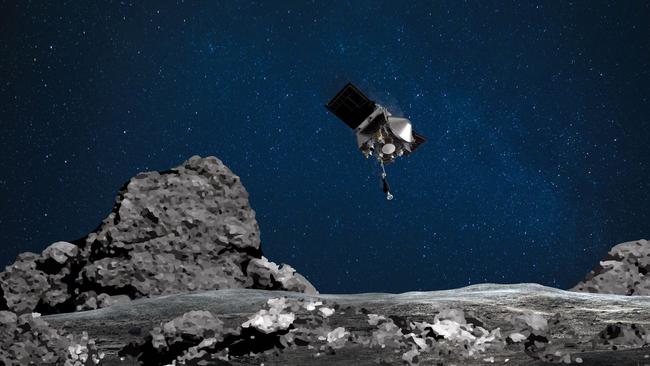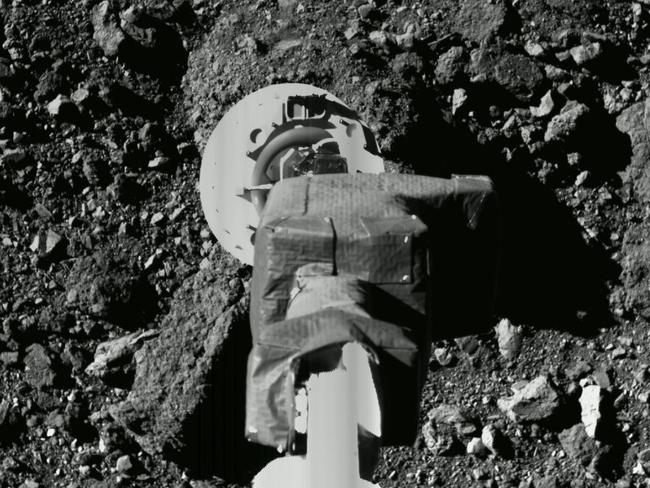NASA’s Osiris-Rex spacecraft hoovers up Bennu asteroid dust
After a four-year journey, robotic spacecraft Osiris-Rex briefly touched down on asteroid Bennu to collect rock and dust samples.

After a four-year journey, NASA’s robotic spacecraft Osiris-Rex briefly touched down on asteroid Bennu’s boulder-strewn surface on Wednesday to collect rock and dust samples in a precision operation 330 million kilometres from Earth.
The so-called “touch-and-go” manoeuvre was managed by Lockheed Martin Space in Denver, Colorado.
The mission was 12 years in the making and rested on a critical 16-second period where the spacecraft performed a delicate autonomous manoeuvre to grab its payload: at least 60g of surface material that scientists hope will help unravel the origins of the solar system.
If Osiris-Rex successfully comes home in September 2023, it will have collected the largest sample returned from space since the Apollo era five decades ago.
“We think we actually might be coming back with a baby picture of what the solar system was like, of what our chemistry was like, billions of years ago,” NASA scientist Michelle Thaller said.
“We’re looking for our own origins out there, and that’s why we’ve gone so far to bring a bit of Bennu back.”
The spacecraft, about the size of a large van, slowed down to a crawl of just 10cm a second on the final phase of its descent into the asteroid’s Nightingale crater on the north pole of the asteroid, which is 490m in diameter.
It eased its robotic arm down to a target zone just 8m in diameter, then fired pressurised nitrogen to agitate the surface material and catch its sample.

Scientists will have to wait until Sunday to find out if Osiris-Rex has succeeded in collecting the desired amount of dust. They want at least 60g but the spacecraft is capable of picking up as much as 2kg.
Beth Buck of Lockheed Martin explained that it was not possible to actually land on the asteroid, “so we will only be kissing the surface”.
AFP



To join the conversation, please log in. Don't have an account? Register
Join the conversation, you are commenting as Logout